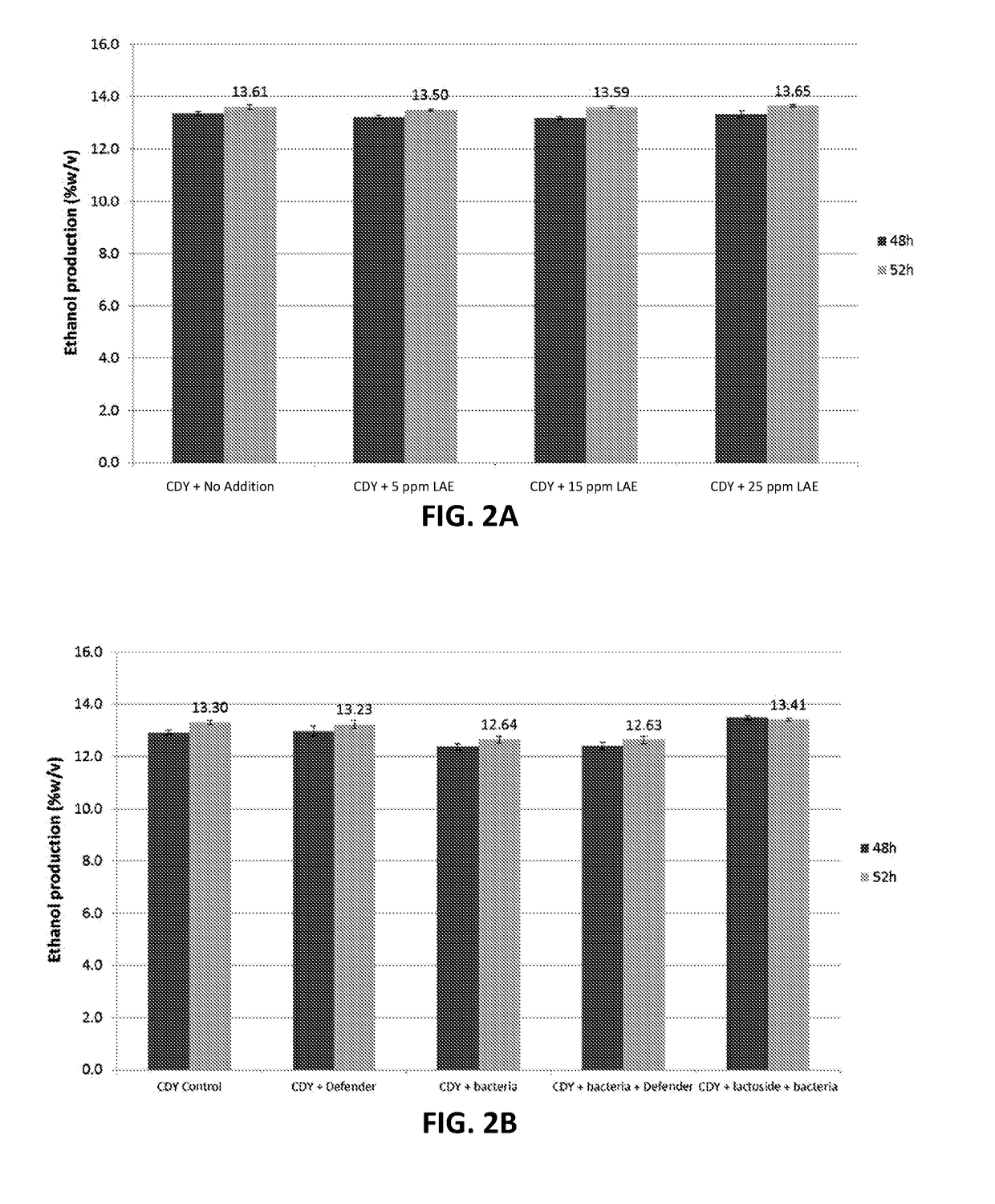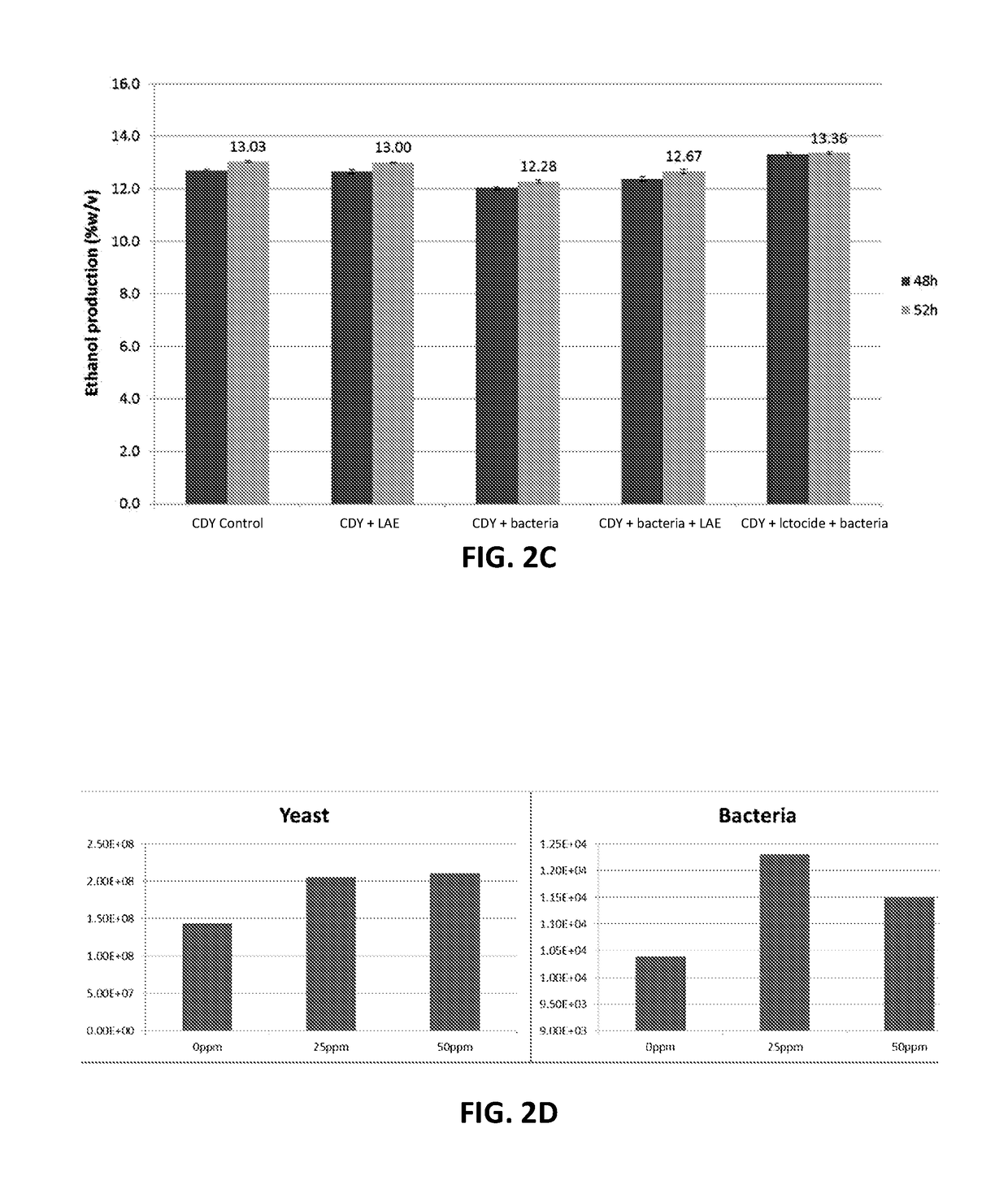Method and system for treatment of microorganisms during propagation, conditioning, fermentation, and preservation using lae and selected additives
a technology of microorganisms and conditioning, applied in the field of microorganism control in fermentation, conditioning, propagation process, can solve the problems of spoilage of entire fermentation batches, gram-positive bacteria, and affecting the growth rate of the bacteria, so as to improve the propagation and thrive, reduce the number of gram-positive bacteria, and reduce the production of glycerol.
- Summary
- Abstract
- Description
- Claims
- Application Information
AI Technical Summary
Benefits of technology
Problems solved by technology
Method used
Image
Examples
Embodiment Construction
I. Terminology
[0041]The terms and phrases as indicated in quotes (“”) in this Section I are intended to have the meaning ascribed to them in this Terminology Section applied to them throughout this document, including the Claims, unless clearly indicated otherwise in context. Further, as applicable, the stated definitions are to apply, regardless of the word or phrase's case, to the singular and plural variations of the defined word or phrase.
[0042]The term “or”, as used in this Specification and the appended Claims, is not meant to be exclusive; rather, the term is inclusive, meaning “either or both”.
[0043]References in the Specification to “one embodiment”, “an embodiment”, “a preferred embodiment”, “an alternative embodiment”, “a variation”, “one variation”, and similar phrases mean that a particular feature, structure, or characteristic described in connection with the embodiment is included in at least an embodiment of the invention. The appearances of the phrase “in one embodi...
PUM
| Property | Measurement | Unit |
|---|---|---|
| water activity | aaaaa | aaaaa |
| water activity Aw | aaaaa | aaaaa |
| temperature | aaaaa | aaaaa |
Abstract
Description
Claims
Application Information
 Login to View More
Login to View More - R&D
- Intellectual Property
- Life Sciences
- Materials
- Tech Scout
- Unparalleled Data Quality
- Higher Quality Content
- 60% Fewer Hallucinations
Browse by: Latest US Patents, China's latest patents, Technical Efficacy Thesaurus, Application Domain, Technology Topic, Popular Technical Reports.
© 2025 PatSnap. All rights reserved.Legal|Privacy policy|Modern Slavery Act Transparency Statement|Sitemap|About US| Contact US: help@patsnap.com



